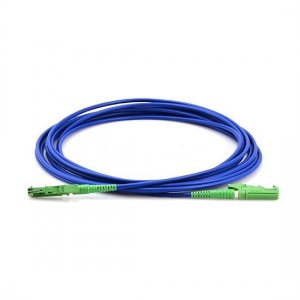Armored Fiber Optic Cable: Robust and Reliable Solution for Harsh Environments

# Armored Fiber Optic Cable: Robust and Reliable Solution for Harsh Environments
## Introduction to Armored Fiber Optic Cables
In today’s increasingly connected world, reliable data transmission is crucial across all industries. Armored fiber optic cables have emerged as a superior solution for environments where standard cables simply can’t withstand the physical challenges. These specialized cables combine the high-speed data transmission capabilities of fiber optics with enhanced durability features.
## What Makes Armored Fiber Optic Cables Different?
Unlike standard fiber optic cables, armored versions incorporate additional protective layers that shield the delicate glass fibers from external threats. The key differentiators include:
– Metal or non-metallic armor layers
– Enhanced crush resistance
– Improved rodent protection
– Superior moisture and chemical resistance
– Increased tensile strength
## Construction and Design Features
The typical armored fiber optic cable consists of several carefully engineered layers:
### Core Components
At the heart of the cable are the optical fibers themselves, usually made of ultra-pure glass. These fibers are surrounded by a buffer coating for additional protection.
### Armor Layer
The defining feature is the armor layer, which can be made of:
– Corrugated steel
– Aluminum
– Stainless steel
– Non-metallic materials like Kevlar
### Outer Jacket
The outermost layer is a durable jacket material selected based on the specific environmental conditions the cable will face.
## Applications in Harsh Environments
Armored fiber optic cables excel in challenging conditions where standard cables would fail:
### Industrial Settings
Manufacturing plants with heavy machinery, vibration, and potential chemical exposure benefit greatly from armored solutions.
### Outdoor Installations
For direct burial applications or aerial installations exposed to weather extremes, armored cables provide long-term reliability.
### Military and Defense
Secure communications in field operations demand cables that can withstand physical stress and environmental hazards.
### Oil and Gas Industry
Harsh offshore and drilling environments require cables that resist corrosion, crushing, and extreme temperatures.
## Advantages Over Traditional Cables
The benefits of armored fiber optic cables make them worth the additional investment in demanding applications:
– Superior physical protection against crushing and impact
– Enhanced resistance to rodent and insect damage
– Better performance in extreme temperatures (-40°C to +85°C)
– Longer lifespan in challenging conditions
– Maintains signal integrity despite physical stress
– Reduced maintenance and replacement costs
Keyword: armored fiber optic cable
## Installation Considerations
While armored cables offer superior protection, they require special handling during installation:
### Bending Radius
The armor layer increases stiffness, requiring careful attention to minimum bending radius specifications.
### Termination Methods
Special tools and techniques are needed for proper termination of armored cables.
### Grounding Requirements
Metallic armored cables may require proper grounding to prevent electrical hazards.
## Future Trends in Armored Fiber Technology
As demand grows for robust connectivity solutions, we’re seeing innovations in armored fiber optic cables:
– Development of lighter-weight armor materials
– Integration of smart monitoring capabilities
– Improved flexibility without sacrificing protection
– Enhanced fire-resistant formulations
– More environmentally friendly materials
## Conclusion
Armored fiber optic cables represent the ideal solution for maintaining high-speed, reliable data transmission in environments where standard cables would quickly fail. Their robust construction ensures uninterrupted connectivity while reducing long-term maintenance costs. As technology advances and industries face increasingly harsh operating conditions, the importance of armored fiber solutions will only continue to grow.
Leave A Comment